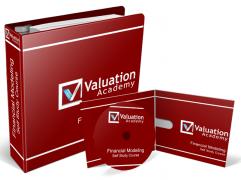A DCF (Discounted Cash Flow) analysis measures the cash flow in terms of its present value. The method of discounting cash flow at the end of a projected year is applied with the following formula:
![]()
Where:
![]() = discount rate or WACC
= discount rate or WACC
![]() =years in the future
=years in the future
This formula presents issues because it discounts the future value of cash flow too aggressively by assuming that the total value of the cash flow in a given year is calculated at the end of that year. This method of calculation is not applicable because it does not take into account that the flow of cash is distributed throughout that year (uniform cash flows). In order to measure the discounted cash flows more accurately we need to discount the cash flows at the mid-year. The following formula that is used to measure this convention is:
![]()
The Enterprise Value (EV) or Invested Capital Value (IC) is affected by the assumptions of the timing of the cash flows. In the mid-period convention it is assumed that the Free Cash Flow to the Firm (FCFF) occur evenly throughout the year, in comparison to the end-year convention that is measured at the end of the interval.
The Enterprise Value formula that is commonly taught using year end discounting is:
![]()
Where:
![]() = enterprise value
= enterprise value
![]() = free cash flow
= free cash flow
![]() = terminal value (Gordon Growth or Exit Multiple)
= terminal value (Gordon Growth or Exit Multiple)
![]() = discount rate or WACC
= discount rate or WACC
![]() = years in the future
= years in the future
The mid-year discounting convention in relation to the Enterprise Value formula is a modified version of the year-end discounting convention and it differs in one key way, the Terminal Value. Please see our discussion on the Terminal Value to understand the differences between the two methods of calculating the Terminal Value (Gordon Growth Terminal Value vs. Exit Multiple Terminal Value). The Enterprise value formula in relation to mid-year convention with a terminal value calculated with Gordon Growth is:
![]()
Where:
![]() = enterprise value
= enterprise value
![]() = free cash flow
= free cash flow
![]() = terminal value (Gordon Growth)
= terminal value (Gordon Growth)
![]() = discount rate or WACC
= discount rate or WACC
If using the mid-year convention is a convenient approximation for uniform cash flow throughout the year and cash flow is assumed to be uniform during the first 5 years, it will be uniform afterwards. The Gordon Growth Model assumes a company continues into perpetuity, and derivation is based on end-of-year cash flows. Therefore it is necessary to discount the present value of the Gordon Growth terminal value using the mid-year convention at the terminal year.
The Enterprise value formula in relation to mid-year convention with a terminal value calculated using an exit multiple is:
![]()
Where:
![]() = enterprise value
= enterprise value
![]() = free cash flow
= free cash flow
![]() = terminal value (Exit Multiple)
= terminal value (Exit Multiple)
![]() = discount rate or WACC
= discount rate or WACC
![]() = years in the future
= years in the future
If the terminal value is an exit multiple, the mid-year discounting convention is not used. This is due to the true terminal nature of an exit multiple; it is assumed that the company is sold at the end of the projected period, and the cash is received at the time of sale (year n).
